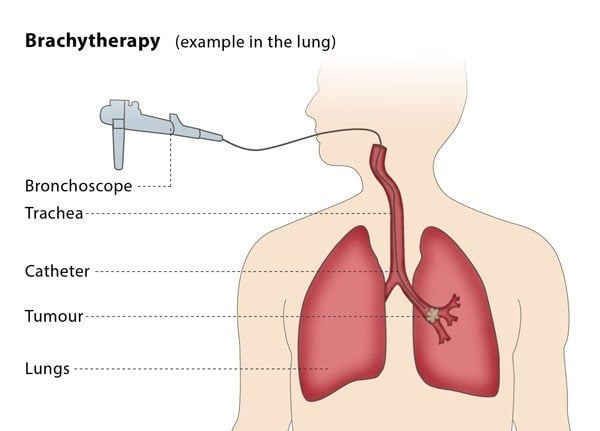Brachy Therapy
Brachytherapy, also known as internal radiation therapy, is a type of cancer treatment where a radiation source is placed inside or close to the tumor. The term “brachy” comes from the Greek word for short distance. This therapy allows for a high dose of radiation to be delivered directly to the tumor while minimizing exposure to surrounding healthy tissues.
There are two main types of brachytherapy:
Interstitial brachytherapy: In this approach, radioactive sources are placed directly into the tumor or the tissue surrounding it. This can be done using needles, catheters, or other applicators that are inserted into the body, either temporarily or permanently.
Intracavitary brachytherapy: Here, radioactive sources are inserted into a body cavity near the tumor, such as the vagina (for gynecological cancers) or the esophagus (for esophageal cancer). The radiation is delivered from within the cavity to target the tumor.

Brachytherapy is often used to treat various types of cancer, including prostate, cervical, breast, and skin cancers, among others. It can be used as the primary treatment or in combination with other therapies like surgery, chemotherapy, or external beam radiation therapy.
One of the key advantages of brachytherapy is its ability to deliver a high dose of radiation directly to the tumor while sparing nearby healthy tissues. This can lead to better tumor control and fewer side effects compared to external beam radiation therapy. Additionally, because the radiation sources are placed close to the tumor, treatment times are often shorter, and overall treatment duration may be reduced.
However, brachytherapy also has some limitations and risks, including potential damage to nearby organs and tissues, as well as the risk of radiation exposure to healthcare providers during the procedure. Patients undergoing brachytherapy are closely monitored by a team of healthcare professionals to ensure the treatment is delivered safely and effectively.

